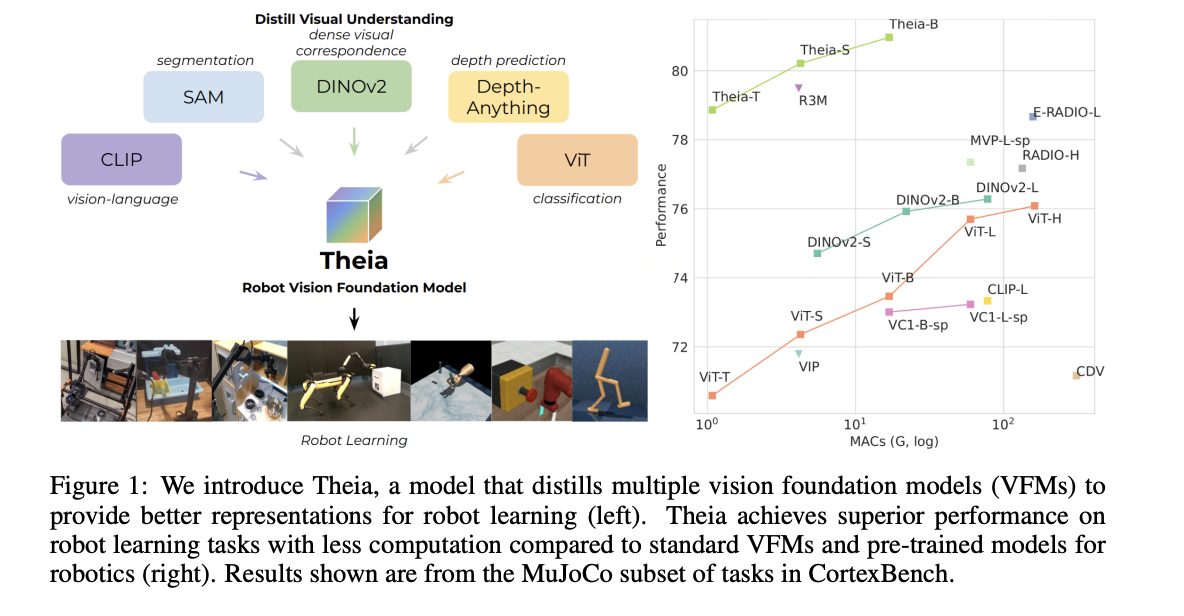
Practical Solutions and Value of Theia: A Robot Vision Foundation Model
Consolidating Visual Understanding
Visual understanding involves solving various high-dimensional visual tasks such as depth prediction, object identification, and semantic grounding. The vision foundation models (VFMs) like CLIP, DINOv2, and ViT offer consolidated visual representations for improved downstream robot learning performance at lower computing costs.
Efficiency and Performance
Theia model demonstrates remarkable efficiency, requiring minimal computation for training. The model size, spatial token usage, and the entropy of representation norms are identified as critical performance factors for robot learning, providing reassurance about the model’s efficiency.
Training Process and Quality Assessment
The training process involves knowledge distillation, ensuring that the feature translators’ outputs match the teacher VFM representations. The quality of pre-trained visual representations is assessed using simulation tasks found in CortexBench, demonstrating significant performance improvements across various robot learning applications.
Evolve Your Company with AI
Identify Automation Opportunities
Locate key customer interaction points that can benefit from AI to streamline processes and improve customer experience.
Define KPIs
Ensure your AI endeavors have measurable impacts on business outcomes by defining key performance indicators (KPIs).
Select an AI Solution
Choose AI tools that align with your needs and provide customization to enhance your business operations.
Implement Gradually
Start with a pilot, gather data, and expand AI usage judiciously to optimize your business processes and customer engagement.
Connect with Us
For AI KPI management advice and continuous insights into leveraging AI, connect with us at hello@itinai.com. Stay tuned on our Telegram t.me/itinainews or Twitter @itinaicom for the latest updates.

























